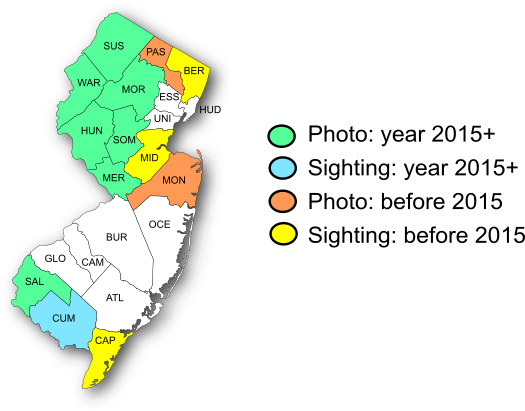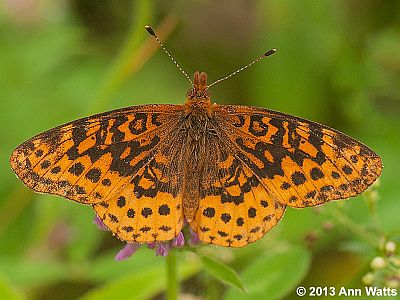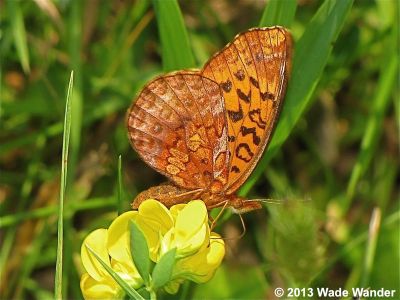New Jersey Butterfly Club
A chapter of the North American Butterfly Association (NABA)
Meadow Fritillary
Boloria bellona
Identification: Small—1.6” (between the size of Pearl Crescent and American Lady). Above: FW and HW bright orange with many distinct, black marks; little black along outer margins. FW tip somewhat squared-off. Below: Mottled orange, yellow, and violet.
NJ Status and Distribution: Resident. Fairly widely distributed but in small numbers in Sussex, Warren, Morris and Hunterdon, and Mercer counties; in South Jersey reported only from Salem County. Formerly more common.

Habitat: Open, sunny, uplands and wetlands with abundant wildflowers such as thistles and mints. Often found in hayfields. Does not appear to nectar as often as the larger fritillaries.
Flight Period: Three broods from mid-April to mid-October, with peak flight times in May, early summer, and late summer. Timing of adult emergence varies slightly among years and locations. Extreme dates: North Jersey 4/16—10/17; South Jersey 6/4—9/30.
Caterpillar Food Plants: Violets (Viola).
Overwintering Stage: Caterpillar.
Good Locations: White Lake NRA, Wallkill River NWR, Flatbrook-Roy WMA, Water Wheel Farm (Fredon Twp., Sussex Co.), Supawna Meadows NWR, Featherbed Lane/Kings Highway (Salem Co.).
Comments: Numbers fluctuate from year to year and between broods.


